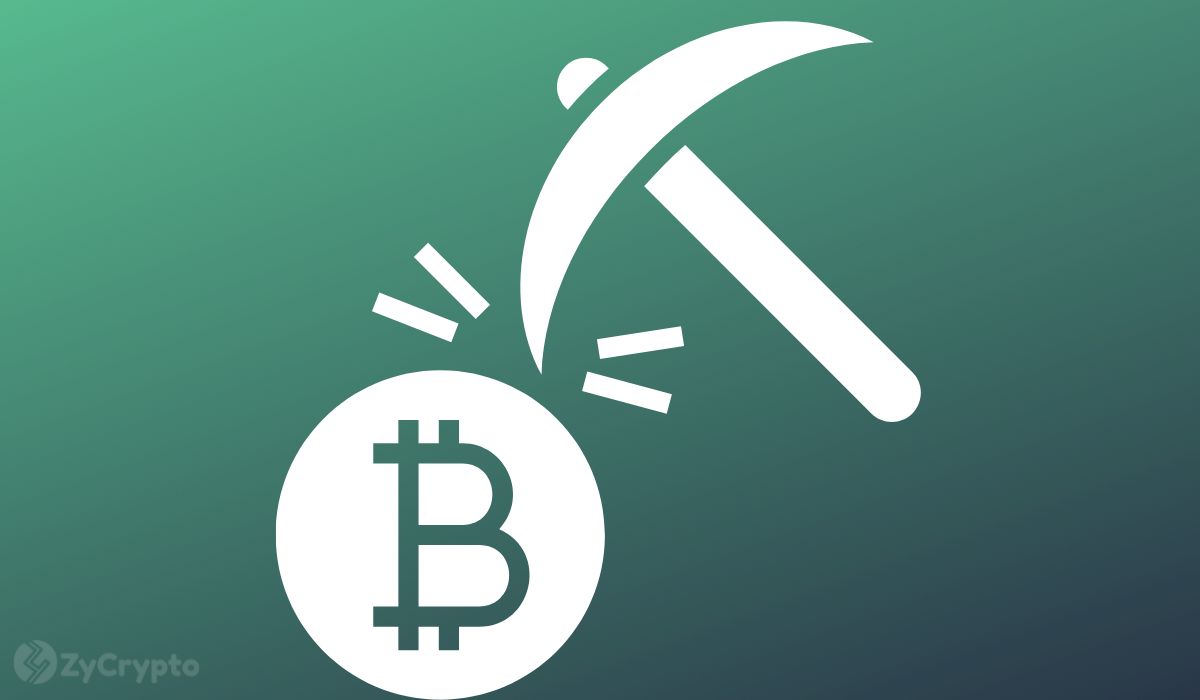2020-11-20 21:29 |
By Daniel Frumkin, Technical Writer at Braiins
With the price of bitcoin trending upwards, the gap between its market price and production costs is growing wider. Just as there are various factors that influence exchange rates, production costs can vary wildly depending on location, energy costs, hardware and software. Mining is mostly about efficiency, while price depends on supply and demand.
Braiins, who operate the world’s first mining pool, SlushPool, and produce software specifically to help miners boost their efficiency, have contributed this article to help understand the inner workings of the mining business. Read on to discover the baseline value of Bitcoin at the source, how it translates into profit for miners, and the competitive landscape, both now and in the future.
Like any asset, the cost of buying one bitcoin comes at a premium on top of the cost of producing one bitcoin. Mining technology is specialized and expensive, making it risky to set up since the asset price is unstable. Electricity costs also vary depending on location, making the business very competitive, with profit margins much tighter for some than others. At the time of writing, miners are coming off a short period of greatly increased profitability as the dominant, hydro-powered Chinese competitors moved their machines between regions due to the end of the rainy season. This year, the migration caused a mining difficulty drop of 16%, one of the largest reductions ever seen, demonstrating the influence these huge mining operations can have; what does this concentration of hashrate mean for the rest?
Supply Shock: Big Investments on Both SidesFunds such as the Grayscale Bitcoin Trust, reportedly on track to hold 500,000 bitcoins by the end of the year, have been buying bitcoin at a rate that outpaces the speed at which they are mined. So, how does the emergence of these big buyers, including publicly-listed companies such as Square and MicroStrategy, impact the mining industry?
From a zoomed-out perspective, the fact that there are more and more institutions and private companies getting into Bitcoin seems to have a positive impact on the BTC price, which in turn has a positive impact on miners. At the same time, the role of miners in the market is decreasing every 4 years due to the halvings, as new coin issuance accounts for a smaller portion of the liquid supply. This is good, because it means that miners are less likely to crash the BTC price when they sell to cover their costs and less likely to suppress price increases when institutional and retail demand grows.
When we redirect focus to the big companies involved in the mining industry itself, competition is fierce, making the question even more significant. Chinese miners have had large competitive advantages since the ASIC era began in 2014, getting first access to new hardware because manufacturers are based there. Now that there is such strong interest in Bitcoin from these big companies and investors, miners in Europe and the Americas are receiving better access to capital and forming closer relationships with manufacturers, which in turn helps them scale up their operations more effectively than was possible in years past.
Ultimately, the emergence of institutional money is helping drive hashrate redistribution in the West. So, from a mining decentralization standpoint, it’s very good. However, it also brings some other potential downsides, such as the introduction of KYC procedures tied to hashrate, and the censoring of transactions from blacklisted wallets, in order for miners to comply with government regulations. While this is inevitable to some degree, Braiins are already working to preserve the permissionless nature of mining and Bitcoin’s censorship resistance with the mining protocol introduced last year, Stratum V2.
Mining Difficulty and ProfitabilityWhen large mining farms go offline, the total global hashrate plummets. To account for this, the Bitcoin network has a mechanism in place that reduces the average hashrate needed to mine a block, otherwise known as difficulty, to ensure that blocks continue to be produced at roughly the same rate. Any decrease of network difficulty results in a proportional increase in mining revenue for the miners who are left. Typically, difficulty only drops after the Bitcoin price drops significantly, forcing inefficient miners to shut down ASICs (specialized mining computers) that aren’t profitable anymore.
This time, that was not the case because Bitcoin’s price has been rising, so miners were able to mine more BTC after the difficulty drop and, as a bonus, that BTC was also worth much more in terms of fiat currency. For miners who have been struggling to survive with thin margins since the halving in May 2020, this comes as a huge relief.
Since the bear market began in 2018 and particularly after the halving, difficulty has been increasing much faster than price. As a result, Bitcoin miner profitability month-over-month has looked something like this.
Source: BTC Profitability Calculator; Monthly profit decreases over time as the ratio of difficulty to price increases.Now that price has begun increasing rapidly, the rate of hashrate coming online and difficulty increasing can’t keep up. So instead of revenue and profit margins continuing to go down over time, they are instead increasing, making the outlook much stronger.
Monthly profit increases over time because price is rising faster than difficulty (all other variables held constant).The reason for this particularly great stretch of profitability for miners in November is that the rainy season in Sichuan, China just came to an end. Miners who were operating there to take advantage of cheap hydropower had to relocate their machines for the winter and spring. Unfortunately for other miners, that means that most of the hashrate will come back online in the near future, so the lower difficulty will be short-lived.
However, the price increase will continue boosting margins for miners in the following months even after all the hashrate from Sichuan comes back online elsewhere, so long as price doesn’t drop back down to October levels.
Open-Source is Decentralizing MiningAs mentioned above, the concentration of hashrate in China is due in large part to the fact that leading hardware manufacturers like Bitmain and MicroBT are located there. This means that Chinese miners get first access to the machines, lower shipping costs, no international taxes or tariffs, and better connections to support teams and ASIC repair services. This has caused concerns in the community over centralization, especially since it is happening in a country which sees heavy government involvement across every industry.
At Braiins, we have tried to lessen concerns of mining’s centralization in a couple of ways. It all started in 2017–2018, when Bitmain had both the covert AsicBoost and the Antbleed fiascos. (To summarise for those who don’t know, covert AsicBoost was a hidden performance increase capability in the Antminer S9 that enabled mining to be about 13% more efficient. Antbleed was a hidden backdoor in the Bitmain firmware that enabled Bitmain to remotely control and shut off ASICs.)
At the time, MicroBT was not such a strong player and Bitmain was dominating the market, so these incidents were extremely concerning. The first thing Braiins did in response was to develop Braiins OS, launching it in 2018 as the first open-source firmware for SHA-256 ASICs with overt AsicBoost enabled. Essentially this meant that anybody could get the 13% performance boost for their ASICs for free, while also being able to see our full source code and verify that there were no hidden backdoors.
Earlier in 2020, Braiins took another important step forward by developing an enterprise version called Braiins OS+, which includes autotuning to further boost performance, making mining more competitive and transparent, offsetting the supply chain advantage that has benefitted chinese miners for years. To demonstrate this , you can see how the cost of mining one Bitcoin changes, even when using the same ASIC (an Antminer S9), depending on the firmware it runs.
Antminer S9 with stock firmwareAntminer S9 with Braiins OS+ autotuning firmwareSince Braiins OS+ can help miners boost profitability without investing in the newest and most expensive hardware, it has seen significant adoption and is continuing to grow rapidly. In terms of concerns surrounding mining centralization, this is important for two reasons:
There are fewer machines running Bitmain firmware, which has a history of hidden features and backdoors.The new Stratum V2 mining protocol which is included in the OS will eventually grant miners the ability to choose what transactions are included in blocks, known as Job Negotiation, instead of pools choosing, bringing more power to individual miners.For the majority of Bitcoiners who don’t mine but who do care about decentralization, this second point is most important. It will require some changes to Bitcoin Core for the Job Negotiation aspect of the protocol to be usable, but there are already thousands of miners using Braiins OS+ with Stratum V2, and they will all be able to help increase Bitcoin’s decentralization with Job Negotiation once the Bitcoin Core updates have been made.
Overall, the mining industry is trending in a positive direction, with North America emerging as the new frontier for enterprise mining operations. China’s share of physical hashrate is expected to drop in the coming years, and competition in hardware manufacturing is also a positive development for the mining industry. The one area that isn’t improving much is pool centralization, as all of the major mining pools besides Slush Pool are based in China.
With consistently increasing demand for BTC and the programmatic reduction in supply issuance, the boom-bust cycles typical of all nascent technologies are playing out exactly as expected for Bitcoin. Miners who think in 4–5 year timeframes and who managed to survive the bear market are set up to have fantastic margins in the months ahead. Hopefully, adoption of Stratum V2 will help tip the balance away from Chinese dominance, securing a more transparent, decentralized future for the mining industry.
An Insider Update on the Bitcoin Mining Industry was originally published in Trezor Blog on Medium, where people are continuing the conversation by highlighting and responding to this story.
origin »Bitcoin (BTC) íà Currencies.ru
|
|

















